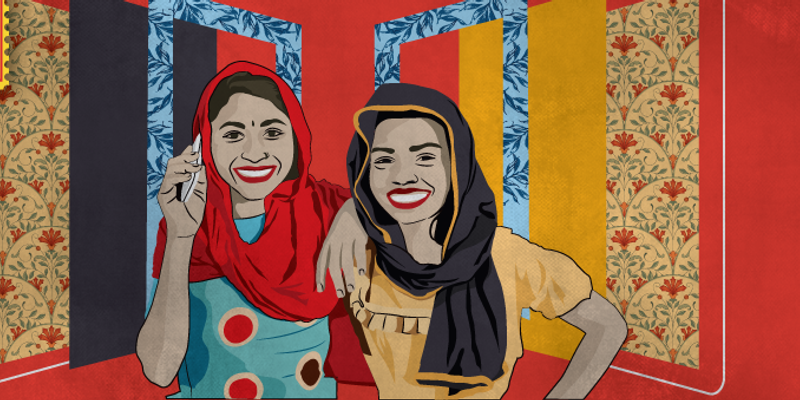
Small-town India is no longer the slow-paced cousin to the metros. With smartphones in hand and soaring aspirations, consumers in Bharat’s Tier II, III, and IV towns are embracing brands, fashion, and digital life like never before. Regional players with local insight are rising to meet this demand, proving that beyond the metros lies the future of India’s consumer story.
As a first-generation retail entrepreneur, I still remember stepping into a newly opened store in a Tier III town in eastern Uttar Pradesh on a sweltering summer afternoon. I expected a modest crowd browsing for basic necessities. Instead, I was greeted by bustling aisles of families and young shoppers eagerly checking out the latest fashion collections. As we chatted with early customers, a shy teenager pulled out his smartphone and showed me an Instagram photo of a Bollywood star, asking if we carried a similar jacket. In that moment, it struck me: this “aspirational Bharat” of small-town India was dreaming just as big as any metro consumer. That day, I saw firsthand how the gap between urban and rural aspirations was rapidly shrinking, and it changed my perspective forever.
Whether it’s a college student in Haryana wanting the same sneakers his Mumbai counterpart wears, or a homemaker in Bihar following the latest kitchen gadget trends on YouTube, the consumers of Bharat are more trend-aware than ever. With affordable smartphones and cheap data plans connecting even remote villages, millions of people beyond the metros are exposed to the same movies, Instagram reels, and ecommerce ads as urban audiences. As of 2024, rural areas actually account for 55% of India’s 886 million internet users.

Image: Shutterstock
Embracing aspirational Bharat
This digital exposure has sparked a newfound appetite for quality and style—shoppers in small towns aspire to own items from brands that reflect their identity and ambitions. Crucially, these rising aspirations are backed by gradually improving spending power. Incomes in many Tier II and III cities have grown, and a young middle class is emerging in districts once considered purely rural. Equally important is a mindset shift; consumers in smaller towns are willing to invest in lifestyle and convenience.
The digital and infrastructure bridge
Bharat’s marketplaces have undergone a remarkable transformation in recent years. Just a decade ago, many of these smaller towns had little to no access to big brands or modern retail formats. Internet and telecom penetration have improved drastically with low-cost data and widespread 4G coverage. Digital payments have also leapfrogged old barriers. Shopkeepers in small towns proudly display their UPI QR code at the counter; even the local vegetable seller now prefers a quick scan over fumbling for change. UPI transactions in semi-urban and rural stores grew 118% in volume (106% in value) in 2023 alone – highlighting how quickly Bharat is going cashless.
This ease of payment builds trust and comfort with buying, whether online or offline and pulls more people into the formal economy. Logistics and connectivity have likewise improved. New highways, better roads, and expanded delivery networks mean products can reach deeper into rural India on time. A young fashion enthusiast in a Tier III town can order the latest sneakers online and receive them within a few days—a scenario unthinkable not long ago. In recent years, smaller cities and towns have emerged as major drivers of ecommerce growth. Bharat’s consumers have both the access and the appetite to shop, and they’re propelling India’s retail boom beyond the traditional urban hubs.
Regional brands on the frontline of change
Perhaps it's exciting how regional brands and businesses are uniquely positioned to serve these evolving aspirations. Big national brands are waking up to the Bharat opportunity, but it’s the homegrown players who understood it first. Regional entrepreneurs inherently grasp local languages, festivals, and cultural nuances. They know, for instance, that a Punjabi shopper in a Tier II city might prefer brighter colours and specific styles during the festive season, or that a small-town Tamil Nadu customer might respond better to communication in Tamil. This insight allows regional brands to customise products and experiences in ways a generic metropolitan strategy might miss.
These brands also tend to offer a compelling value-for-money proposition, crucial for aspirational buyers with careful budgets. Their stores often become community hubs where customers feel heard and respected. A local apparel label in one town that adjusted its sizing and cuts based on direct feedback from customers—a level of intimacy and agility that big chains would struggle to match. Many such players have grown from one-town operations to formidable brands across states, purely by championing the needs of Bharat’s consumers. They tap local dealer networks, partner with village entrepreneurs, and leverage vernacular marketing via radio or WhatsApp. Increasingly, they are digital-savvy too, setting up ecommerce storefronts for remote pin codes and using local influencers to tell their stories. The result is a new breed of competitive, confident regional brands rising alongside Bharat’s rising consumers.
(JP Sukla is Co-founder and CEO at 1 India Family Mart.)
Edited by Kanishk Singh
(Disclaimer: The views and opinions expressed in this article are those of the author and do not necessarily reflect the views of YourStory.)
Original Article
(Disclaimer – This post is auto-fetched from publicly available RSS feeds. Original source: Yourstory. All rights belong to the respective publisher.)